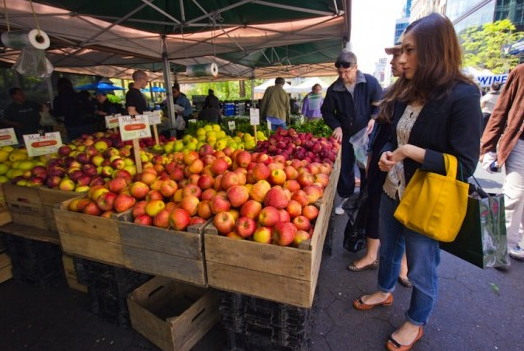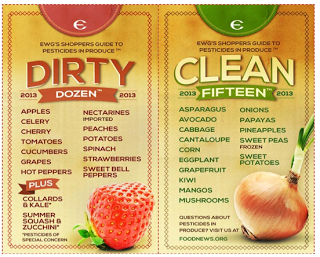Organic vs. Local Produce: How To Choose, When You Have To
It’s a bourgeois dilemma, to be sure, but it’s one many produce-loving healthy eaters face: If your neighborhood farmer’s market only sells local blueberries grown with pesticides and the organic ones at your grocer have been flown in from Chile, which do you buy? In an ideal world you’d always have access to berries that fulfill both criteria, but that’s not generally the case.
“I dealt with this yesterday with a client,” culinary nutritionist Stefanie Sacks, MS, CNS, CDN, told me as soon as I presented her with the question. “It’s all about learning how to negotiate.”
We spoke with Sacks, along with local-leaning Juice Generation founder Eric Helms, and the health coach Urban Detox Club co-founder Jen Morris for a well-rounded perspective on the many factors to consider, plus easy tips to help you pick:
FACTORS TO CONSIDER
1. Pesticides and nutrients.
To avoid gross chemicals altogether, organic is definitely the way to go. But small farmers selling roadside cucumbers may also be using less pesticides than a giant industrial operation; they may even be partially organic, but not up to USDA-certification standards. And if you’re buying the veggies through a third party, they may be checking for you. “We take great pains to meet our farmers and ensure that, certified or not, they’re using sustainable methods and following organic best-practices,” says Juice Generation founder Eric Helms, a huge proponent of local sourcing. It’s just hard to know. Local produce is also going to be richer in nutrients, since it’s been picked more recently.
2. Environment and community.
“If you’re trying to be a conscious consumer, local is usually better,” Urban Detox Club’s Jen Morris says. Not only is it way better for the planet, it also means your dollars are going directly to the person growing your food and supporting the local economy.
3. Taste and appearance.
As anyone who’s ever opened a plastic box to find already limp, wet arugula knows, when it comes to flavor and prettiness on a plate, local wins. “It goes without saying that local produce—produce harvested just the day before it’s delivered to our USDA Certified Organic production facility—retains a vibrancy with which imported products could never compete,” says Helms.
TIPS TO HELP YOU CHOOSE
1. Talk to the farmers.
“The people at the market are often the ones growing the food,” says Morris. “Ask them what their practices are like.” If they’re using GMO seeds and spraying pesticides like it’s going out of style, you can always politely move on.
2. Use the Dirty Dozen.
Both Sacks and Morris suggest using EWG’s list of the top 10 most pesticide-laden foods as a guide. For the foods that top the list, make sure you go organic, even if it means you can’t do local. For those that tend to hold on to less residue, like those on the Clean 15 list, stick to local, even if it’s not organic. This is the kind of grocery shopping negotiation that Sacks recommends.
3. Consider the volume.
“The amount you’re eating matters,” Sacks says. So if you’re eating an apple every day, for example, you’d better buy the organic bag. If you’re just eating a few slices with almond butter once a week, buy the New York State ones that have been sprayed. “If it’s not something you’re eating a lot of, I wouldn’t get yourself too crazy about it.”—Lisa Elaine Held

